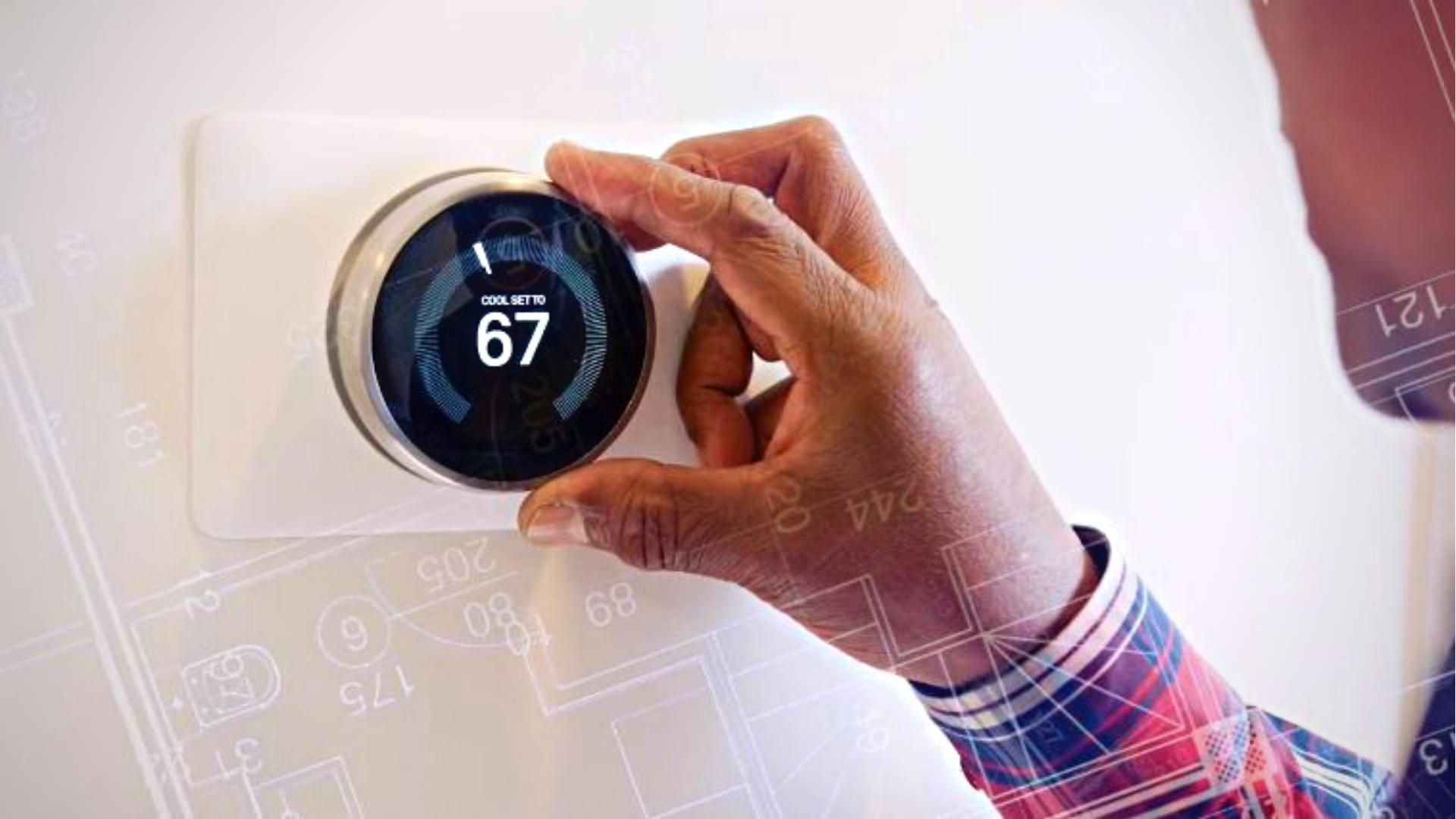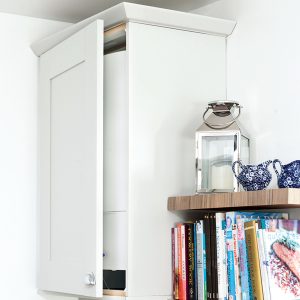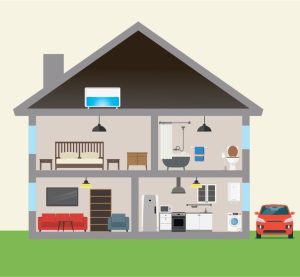
This winter is going to be brutal — and we’re not talking about the weather.Oil and natural gas prices are spiking, which means your heating bill is going to soar, too. The U.S. Energy Information Administration released an Energy Outlook report for winter 2021. It estimates the following:Households that use natural gas will be paying 30% more than last year on their heating bills. If winter is 10% colder than average, bills will be 50% more. If winter is 10% warmer than average, bills will be 22% more.Households that heat primarily with electricity will spend 6% more. If winter is colder, bills will rise 15% and 4% more in a warmer winter.Households that heat primarily with propane will spend 54% more — 94% more in a colder winter and 29% more in a warmer winter.Households that heat primarily with heating oil will spend 43% more — 59% more in a colder winter and 30% more in a warmer winter.Watch the video above: Our Chief National Consumer Correspondent Jeff Rossen shows off some easy tips that will help cut your utility bill down.Thermostat: Turn down your heat when you’re sleeping and heading to work. Turning it down 7 to 10 degrees saves 10%. When you leave for vacation, set it to 55 degrees to save even more money! Smart thermostats do help with this. If you forget to turn down your thermostat, you can adjust it from your phone after you’ve left your house.Adjust your ceiling fan: The direction of how your fan is spinning actually matters. In the summer, the fan should spin counterclockwise. But in the winter, the fan should spin clockwise. That way the cool air is pulled up toward the ceiling, which, in turn, displaces the warm air that rises and collects near the ceiling. Make sure it’s running at the lowest speed. How do you switch the direction? Most ceiling fans have a button on the control pad on the wall or on the remote it comes with. If you have an older ceiling fan, there will be a switch on the motor, either on the outside or underneath the light.Candle test: Drafts coming from windows, doors, or wall outlets could be a waste of money. They let in cold air while sucking the warm air from your house. Energy experts say the candle test is a good way to find drafts. You can do it a couple ways: Light a candle and bring it around the frames of doors and windows. If the flame flickers, you might have a draft coming in. Or, blow the candle and watch for smoke to start moving horizontally. If you see either of those two things happening, grab some caulk and seal up that area.Window curtains: During the day, let the sun do its job. Open your window curtains and let the sun heat your home — especially when it comes to the southern-facing windows. (Don’t know which way south is? Your smartphone has a compass app.) At night, go through your home and close the shades and curtains. This will block the cold draft from coming in and forcing your heater to work overtime. This tip is going to save you up to 10% on your heating bill.Check the fireplace: This tip is like keeping a window open in the winter. You wouldn’t! If you leave your fireplace flue open, experts say 8% of your utility bill could be flying up the chimney! After you’re done having a fire, check inside the fireplace to make sure the flue is closed.LED light bulbs: Replace your regular, old lightbulbs with LED light bulbs. The Department of Energy says LEDs use up to 90% less energy and last up to 25 times longer than traditional incandescent bulbs.Move the furniture: Over time, your furniture tends to shift. Couches and chairs can get pushed up against vents. Not only is this a fire hazard, but it’s blocking the heat from getting into the rest of your home. Every week or every couple of weeks, move your furniture a few inches away from the heating vents to let that warm air flow freely.Blankets and socks: This tip from the experts is probably the simplest, but, sometimes, we forget. Rather than moving the thermostat up a couple of degrees when you’re cold, throw on a pair of warm socks or a sweater. The more blankets you have around, the more you’ll be inclined to grab that instead.Happy savings!
This winter is going to be brutal — and we’re not talking about the weather.
Advertisement
Oil and natural gas prices are spiking, which means your heating bill is going to soar, too. The U.S. Energy Information Administration released an Energy Outlook report for winter 2021. It estimates the following:
- Households that use natural gas will be paying 30% more than last year on their heating bills. If winter is 10% colder than average, bills will be 50% more. If winter is 10% warmer than average, bills will be 22% more.
- Households that heat primarily with electricity will spend 6% more. If winter is colder, bills will rise 15% and 4% more in a warmer winter.
- Households that heat primarily with propane will spend 54% more — 94% more in a colder winter and 29% more in a warmer winter.
- Households that heat primarily with heating oil will spend 43% more — 59% more in a colder winter and 30% more in a warmer winter.
Watch the video above: Our Chief National Consumer Correspondent Jeff Rossen shows off some easy tips that will help cut your utility bill down.
Thermostat: Turn down your heat when you’re sleeping and heading to work. Turning it down 7 to 10 degrees saves 10%. When you leave for vacation, set it to 55 degrees to save even more money! Smart thermostats do help with this. If you forget to turn down your thermostat, you can adjust it from your phone after you’ve left your house.
Adjust your ceiling fan: The direction of how your fan is spinning actually matters. In the summer, the fan should spin counterclockwise. But in the winter, the fan should spin clockwise. That way the cool air is pulled up toward the ceiling, which, in turn, displaces the warm air that rises and collects near the ceiling. Make sure it’s running at the lowest speed. How do you switch the direction? Most ceiling fans have a button on the control pad on the wall or on the remote it comes with. If you have an older ceiling fan, there will be a switch on the motor, either on the outside or underneath the light.
Candle test: Drafts coming from windows, doors, or wall outlets could be a waste of money. They let in cold air while sucking the warm air from your house. Energy experts say the candle test is a good way to find drafts. You can do it a couple ways: Light a candle and [carefully] bring it around the frames of doors and windows. If the flame flickers, you might have a draft coming in. Or, blow the candle and watch for smoke to start moving horizontally. If you see either of those two things happening, grab some caulk and seal up that area.
Window curtains: During the day, let the sun do its job. Open your window curtains and let the sun heat your home — especially when it comes to the southern-facing windows. (Don’t know which way south is? Your smartphone has a compass app.) At night, go through your home and close the shades and curtains. This will block the cold draft from coming in and forcing your heater to work overtime. This tip is going to save you up to 10% on your heating bill.
Check the fireplace: This tip is like keeping a window open in the winter. You wouldn’t! If you leave your fireplace flue open, experts say 8% of your utility bill could be flying up the chimney! After you’re done having a fire, check inside the fireplace to make sure the flue is closed.
LED light bulbs: Replace your regular, old lightbulbs with LED light bulbs. The Department of Energy says LEDs use up to 90% less energy and last up to 25 times longer than traditional incandescent bulbs.
Move the furniture: Over time, your furniture tends to shift. Couches and chairs can get pushed up against vents. Not only is this a fire hazard, but it’s blocking the heat from getting into the rest of your home. Every week or every couple of weeks, move your furniture a few inches away from the heating vents to let that warm air flow freely.
Blankets and socks: This tip from the experts is probably the simplest, but, sometimes, we forget. Rather than moving the thermostat up a couple of degrees when you’re cold, throw on a pair of warm socks or a sweater. The more blankets you have around, the more you’ll be inclined to grab that instead.
Happy savings!




